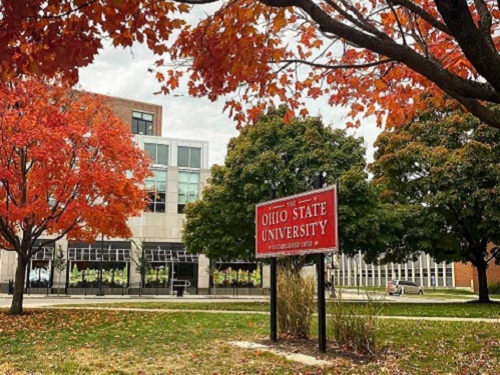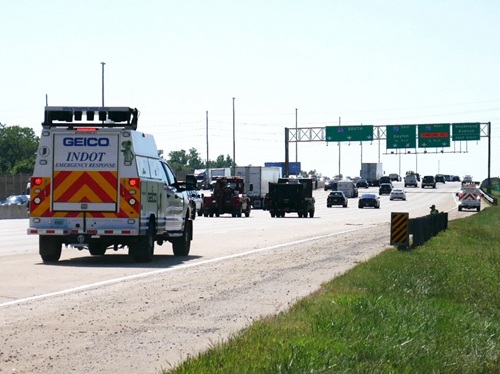Professors at Ohio State University are testing whether cameras installed on transit buses can help count and track vehicles on public roads; providing more real-time and accurate data for traffic management systems and help travelers get to their destinations faster.
[Above photo by Ohio State University]
In a blog post, the researchers described how they are using cameras already installed on campus buses at the school to automatically and accurately measure counts of vehicles on urban roadways, detect objects in the road, and distinguish parked vehicles from those that are moving.
In previous studies, Ohio State researchers found that using these mobile cameras provides much better spatial and temporal coverage than relying on sparsely and often temporarily placed sensors that don’t provide a view of many streets and roads in a city.
“If we collect and process more comprehensive high-resolution spatial information about what’s happening on the roads, then planners could better understand changes in demand, effectively improving efficiency in the broader transportation system,” said Keith Redmill, lead author of the study and a research associate professor of electrical and computer engineering at Ohio State.
“If we can measure traffic in a way that is as good or better than what is conventionally done with fixed sensors, then we will have created something incredibly useful extremely cheaply,” explained Rabi Mishalani, professor of civil, environmental and geodetic engineering at the school. “Our goal is to start building a system that could do this without much manual intervention because if you want to collect this information over lots of potential vehicles and lots of time, it’s worth fully automating that process.”
The system works by tapping into an artificial intelligence-based two-dimensional deep learning model called “YOLOv4” to automatically detect and track objects.
While still a long way from total implementation, the study suggests the system’s results bear promise for the future of intelligent traffic surveillance.
For example, besides counting vehicles, their algorithm is also able to project real-world bird’s-eye-view coordinates of the road network by taking advantage of streams of images, global navigation satellite system or GNSS measurements, and regional information from 2D maps. It’s so precise, the system was also able to detect if the bus veered off from its planned route – and then report it to a map database that logs detailed information about the roadways.
 Nation
Nation


